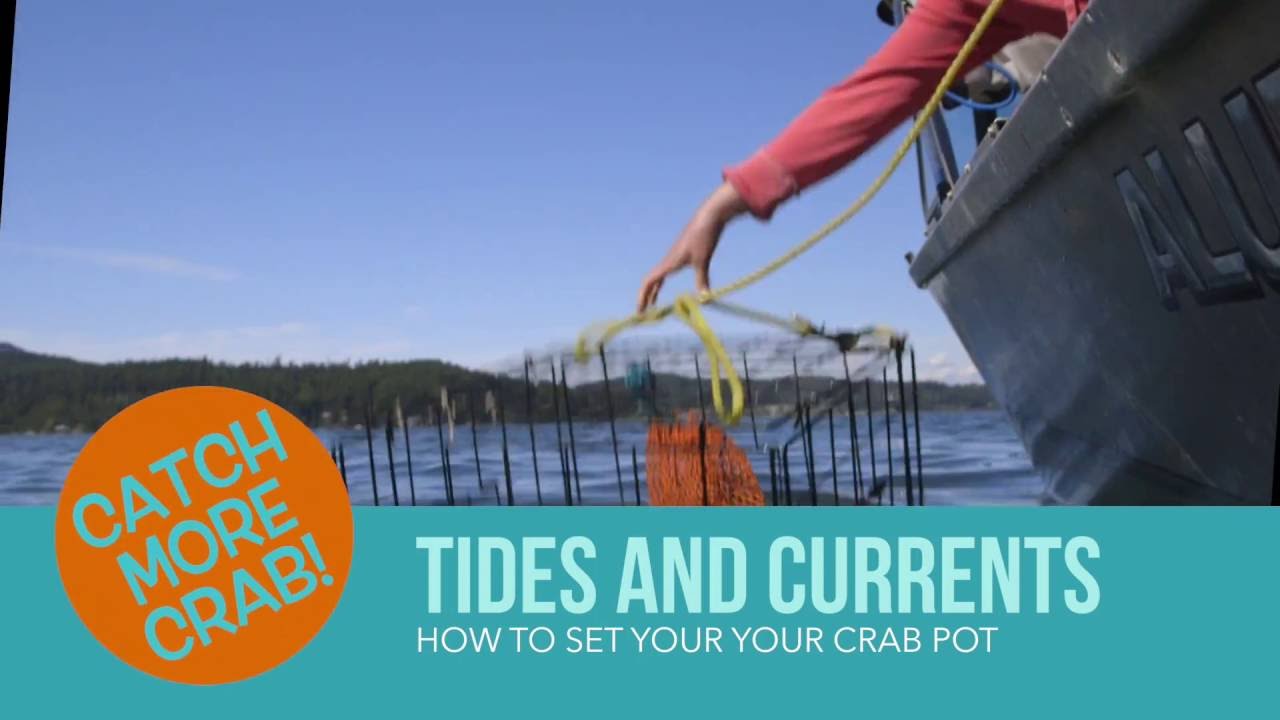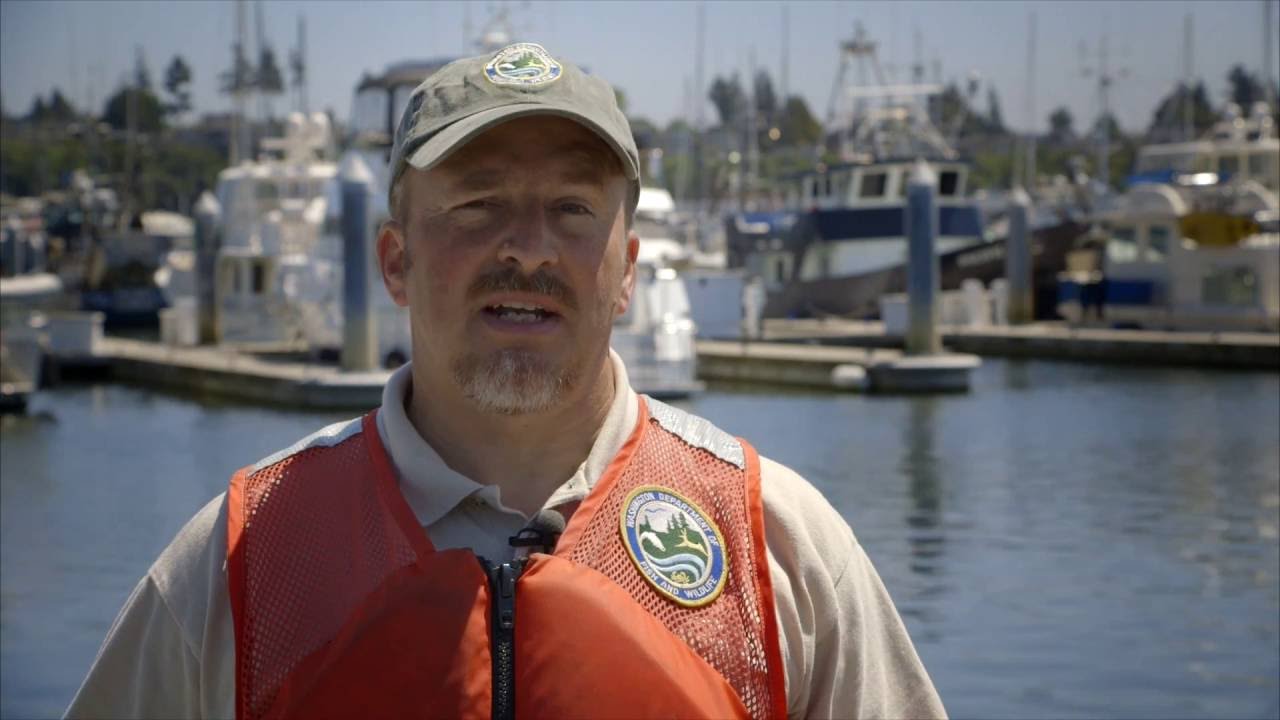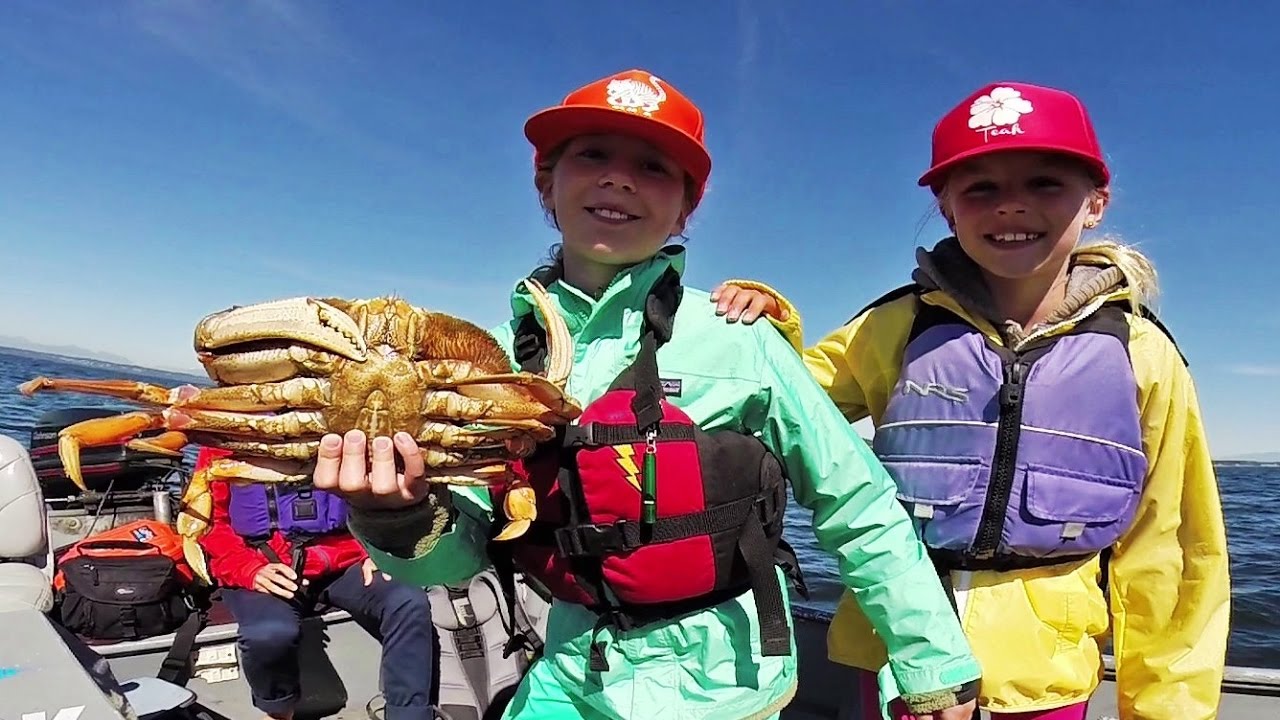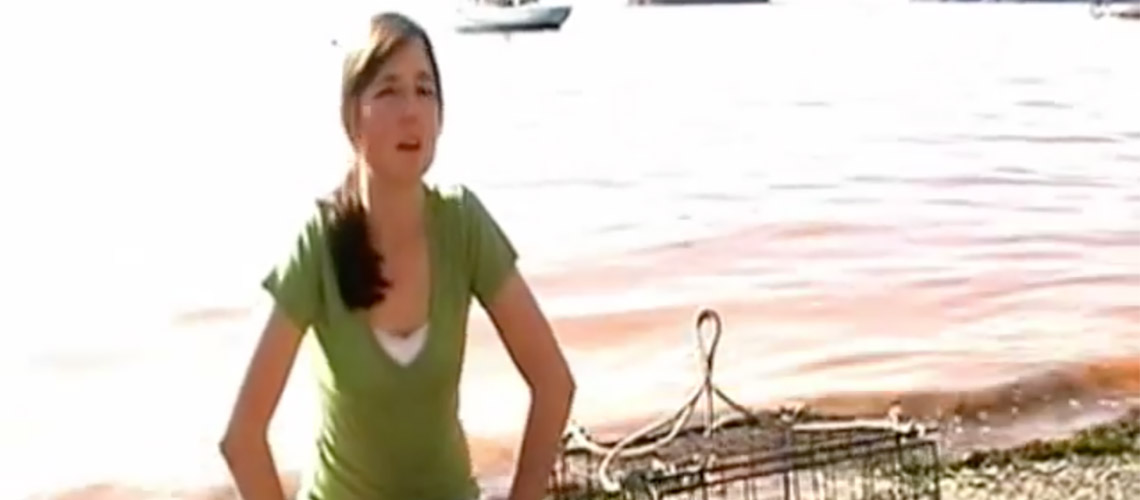Keep Your Crab Pot, Eat More Crabs
12,000 crab pots are lost each year in Puget Sound. A single lost crab pot can kill up to 50 crabs before it deteriorates. That adds up to 180,000 harvestable crabs lost each year. The Snohomish County MRC participates in the Northwest Straits Foundation Campaign to "Catch More Crab!" To avoid lost crab pots, follow the tips and access the resources below to keep your pot and catch more crab.
- AVOID MARINE TRANSIT AND FERRY LANES.
- CHECK TIES AND CURRENTS. Avoid crabbing during strong tidal changes and currents.
- USE HIGH VISIBILITY BUOYS to clearly mark your gear.
- USE A WEIGHTED LINE to sink below the surface and avoid being cut by passing boats.
- WEIGHT YOUR POTS so they do not move in strong currents or tidal changes.
- USE LONGER LINE. Use 1/3 more line than water depth to allow for changes in tides and currents.
- SECURE LID AND ESCAPE PANELS WITH BIODEGRADABLE COTTON ESCAPE CORD. This allows crabs to escape from lost pots after the cord degrades.
Resources to Know When and Where to Set Your Pot
Videos to Help Explain How to Rig and Set Your Pot
Check Tides and Currents (Northwest Straits Foundation)
Modify Your Crab Pot (Northwest Straits Foundation)
The Recreational Crab Fishery in Puget Sound (WDFW)
Crabbing 101 Webinar
The Northwest Straits Foundation held a detailed one-hour webinar in 2020 on Crabbing 101, which can be viewed here.
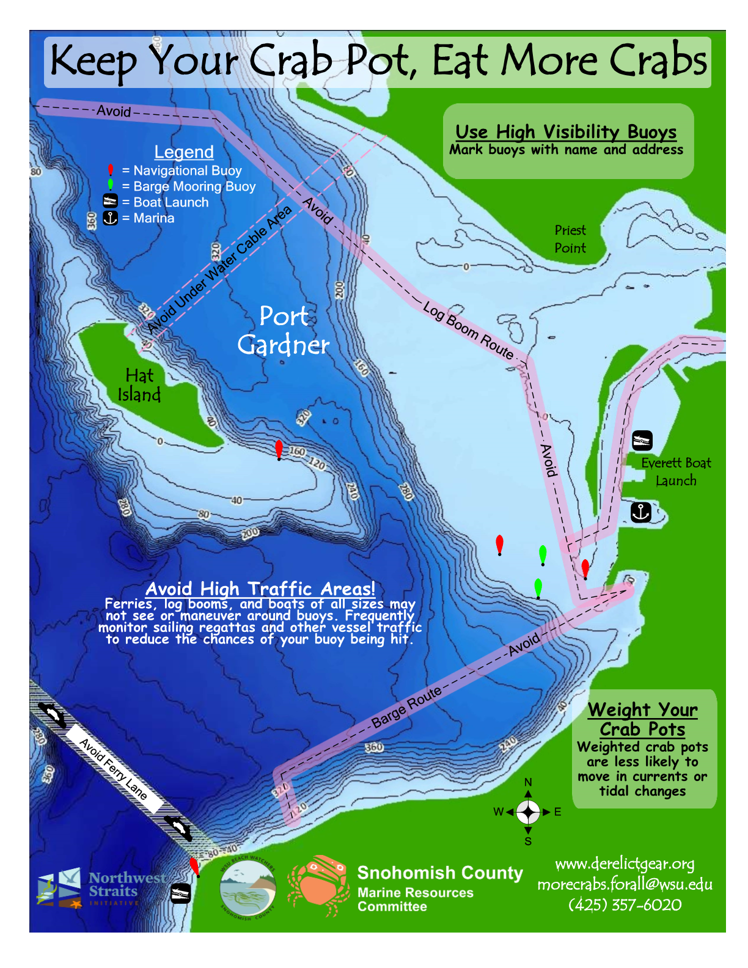 Keep Your Crab Pot, Eat More Crabs - Informational Map (Page 1 of 2)
Keep Your Crab Pot, Eat More Crabs - Informational Map (Page 1 of 2)
Project Background
The Snohomish County MRC developed the "Catch More Crabs" campaign, which is now Puget Sound-wide and managed by the Northwest Straits Foundation. In 2010 and 2011, the MRC Dungeness Crabber subcommittee produced outreach materials aimed at reducing the number of recreational crab pots lost in Port Susan, Possession Sound and Port Gardner during the 2010 crabbing season. The original principle outreach message was “Keep Your Crab Pot, Eat More Crabs.”
To convey this message, an informational map was developed. The map features reminders for best management practices and notes potential hazards that can increase the likelihood of pot loss. The maps were distributed to recreational crabbers at boat launches, sporting good stores, and area parks. WSU Beach Watcher volunteers spoke with crabbers about hazards and best practices to avoid losing crab pots. These face-to-face contacts are essential to reducing the number of crab pots lost annually in Puget Sound.
In July, 2015 the MRC tried another outreach strategy and launched a social marketing photography contest to help raise awareness on various different sustainable crabbing practices. The MRC selected eight Best Management Practices (BMPs) to be the focus for this campaign. Recreational crabbers were encouraged to post photographs of these best crabbing practices on Instagram, using the hashtag #CatchMoreCrabSnoCo. The contest ran through the 38-day summer recreational crabbing season. During the event, the MRC posted 124 photos and awarded prizes to five randomly selected participants. More recently, the MRC has tried using Facebook ads and radio station PSAs to reach crabbers. Outreach each year is primarily conducted during the summer crabbing season (approximately July - Labor Day).
Northwest Straits Commission (NWSC) Benchmarks Achieved:
Education & Outreach, Marine Life, Marine Habitat
Derelict Gear
High school volunteer, Taylor Brown created the YouTube video Derelict Gear – What can YOU do? The video contains information on crab pot escape cords and derelict gear.
 Keep Your Crab Pot, Eat More Crabs - Informational Map (Page 1 of 2)
Keep Your Crab Pot, Eat More Crabs - Informational Map (Page 1 of 2)
